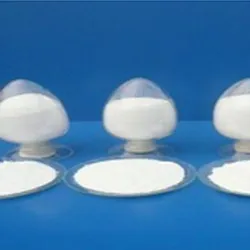
phosphoric acid price
The Price of Phosphoric Acid An Overview
Phosphoric acid, a key ingredient in various industrial applications, fertilizers, and food processing, has seen fluctuating prices in recent years. Its versatility and essential role in many sectors make it a crucial chemical compound in the global market. Understanding the dynamics behind the pricing of phosphoric acid requires a closer examination of its production, demand trends, and the various factors that influence its market value.
Production and Sources
Phosphoric acid is primarily produced using two methods the wet process and the thermal process. The wet process, which accounts for the majority of phosphoric acid production, involves treating phosphate rock with sulfuric acid. This method is favored due to its cost-effectiveness and efficiency. The thermal process, while less common, is used to produce high-purity phosphoric acid, often necessary for specialized applications such as food-grade products.
Phosphate rock, the raw material used for producing phosphoric acid, is mined in several regions worldwide, including North America, Africa, and the Middle East. The availability and price of phosphate rock directly impact phosphoric acid prices. Factors such as mining regulations, geological variations, and global demand for fertilizers can lead to significant price fluctuations.
Market Demand
The demand for phosphoric acid is largely driven by the agricultural sector, where it is primarily used in the production of fertilizers, especially monoammonium phosphate (MAP) and diammonium phosphate (DAP). As the global population continues to grow, the need for efficient food production increases, leading to higher fertilizer demand and subsequently, phosphoric acid consumption. Furthermore, phosphoric acid is also utilized in food processing as an acidulating agent, in metal treatment, and in the production of various chemicals, further diversifying its demand.
Regional demand variations also play a vital role. For instance, emerging economies, particularly in Asia and Africa, have been experiencing growth in agricultural activities, resulting in increased phosphoric acid usage. Conversely, mature markets may see more stagnant demand patterns, influenced by regulatory changes or shifts toward sustainable farming practices.
phosphoric acid price

Market Influences
Several factors can influence the price of phosphoric acid, including raw material costs, energy prices, and international trade dynamics. The prices of sulfuric acid and phosphate rock are vital since they represent the primary input costs for phosphoric acid production. An increase in energy prices, such as oil or gas, can also elevate production costs, leading to higher phosphoric acid prices.
Moreover, geopolitical factors can impact trade flow and availability, affecting local market prices. For example, trade restrictions, tariffs, and changes in regulatory policies can disrupt supply chains, leading to price volatility. Additionally, environmental regulations can affect production costs as manufacturers invest in cleaner technologies or face fines for pollution.
Future Trends
Looking ahead, the phosphoric acid market is likely to be influenced by several trends. Efforts to adopt sustainable agricultural practices may encourage the development of more efficient fertilizers, potentially altering phosphoric acid demand dynamics. Furthermore, advancements in recycling and waste management processes could lead to alternative sources of phosphoric acid, thereby impacting traditional supply chains.
Technological innovations in production processes may also play a critical role in shaping future pricing. Enhanced efficiency could lower production costs, potentially stabilizing prices in the long run. Additionally, fluctuating global economic conditions will continue to influence demand patterns and supply availability, further contributing to price volatility.
Conclusion
In summary, the price of phosphoric acid is a reflection of a complex interplay of production methods, raw material costs, market demand, and external factors. As the global landscape continues to evolve, staying informed about these dynamics will be essential for stakeholders in the agricultural and chemical industries. Understanding the intricacies of phosphoric acid pricing can help businesses and consumers make informed decisions in an ever-changing market environment.
-
Pure Sodium Dichloroisocyanurate Dihydrate | Powerful DisinfectantNewsAug.29,2025
-
Industrial Chemicals: Quality & Purity for Every IndustryNewsAug.28,2025
-
Nitrile Rubber Honoring Strict Production StandardsNewsAug.22,2025
-
Aspartame Ingredients Honoring Food Safety ValuesNewsAug.22,2025
-
Fertilizer for Balanced Plant NutritionNewsAug.22,2025
-
Cyanide Gold Processing with High Purity AdditivesNewsAug.22,2025
-
Formic Acid in Textile Dyeing ApplicationsNewsAug.22,2025
Hebei Tenger Chemical Technology Co., Ltd. focuses on the chemical industry and is committed to the export service of chemical raw materials.
-

view more DiethanolisopropanolamineIn the ever-growing field of chemical solutions, diethanolisopropanolamine (DEIPA) stands out as a versatile and important compound. Due to its unique chemical structure and properties, DEIPA is of interest to various industries including construction, personal care, and agriculture. -

view more TriisopropanolamineTriisopropanolamine (TIPA) alkanol amine substance, is a kind of alcohol amine compound with amino and alcohol hydroxyl, and because of its molecules contains both amino and hydroxyl. -

view more Tetramethyl Thiuram DisulfideTetramethyl thiuram disulfide, also known as TMTD, is a white to light-yellow powder with a distinct sulfur-like odor. It is soluble in organic solvents such as benzene, acetone, and ethyl acetate, making it highly versatile for use in different formulations. TMTD is known for its excellent vulcanization acceleration properties, which makes it a key ingredient in the production of rubber products. Additionally, it acts as an effective fungicide and bactericide, making it valuable in agricultural applications. Its high purity and stability ensure consistent performance, making it a preferred choice for manufacturers across various industries.





